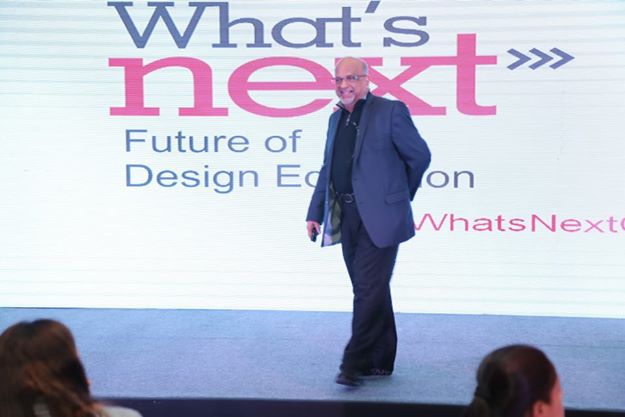At a recent event hosted by Pearl Academy, a leading design, fashion and business institute, industry leaders from across design practices were brought together to discuss the future of design education in India. The context on “Pedagogy of the future” was set by Prof. Vijay Kumar from Illinois Institute of Technology, Institute of Design. After a stimulating session with some of the leading design thinkers in the industry, the various groups which were brought together came to the conclusion that design education is changing as an industry with focus shifting from rigid formats to a more flexible and choice based learning.
With this change, it would be inevitable for the way that education is imparted to shift to a more adaptable format. Leading thinkers of today’s generation such as- Madhav Raman- Architect and Urbanist, Jogi Panghaal-Design Professional, Rahul Mishra-Fashion Designer, Vikas Satwalekar- Design Academician, Deepankar Bhattacharya- Strategic Design Consultant and many more, identified trends in pedagogy that would help build and sustain Institutions for a Sustainable World, Learner-Driven Pedagogy, How the Educator would need to take up the role of an activist and the Impact that Macro Trends would have on the way students are imparted with skills and knowledge about their chosen fields.
Technology, society, businesses and design would need to work together to build a sustainable world. For this to become a reality, a sense of responsibility needs to be inculcated in the current generation. A need for institutions which hold the ability to teach students to make paper, then draw on it and then recycle the same paper was derived from one of the discussions. This would also encourage the sustainability of talent and the way that students look at design as a way of life.
Pedagogy would become such, where a teacher becomes a facilitator and encourages larger groups to work together towards creating insights which would change the way an entire generation looks at certain situations. It would be essential to look at the foundation year of any student as a diagnostic year where the scope of evaluation and project can be decided.
The pedagogy of the future would see peer learning playing a key role in shaping ideas and curriculum. The faculty would need to function in a way where they are embedded in the group and playing an active role as a functioning member, rather than just a leader.
Another option that emerged as a result of the in-depth discussions was facilitating students to opt for apprenticeships in industries that interest them to give them a fair idea of what the future might hold for them in case they do choose a certain field. This would also expose students to multiple sectors and the challenges that each sector faces and work towards adapting design in a more holistic manner.
What’s Next is a World Café Style Confluence which focuses on key issues in design education and need to be mapped and monitored into current and ongoing courses for the curriculum to stay relevant and stimulating for both students and faculty. The two day confluence organized by Pearl Academy aimed at a collaborative sharing of insights which will help transform design education going forward.













